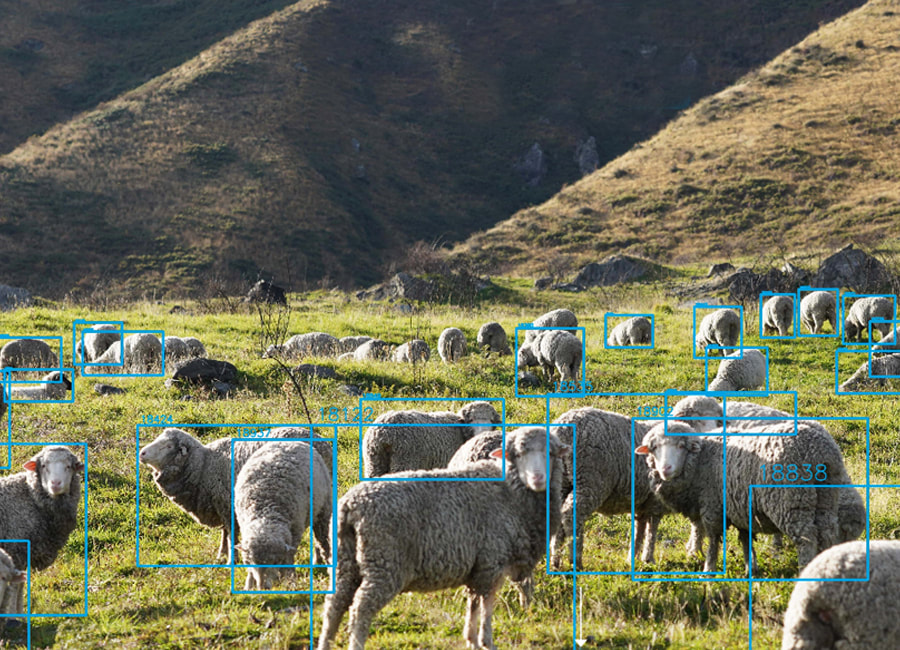Latest Published articles |
If it comes as a surprise that sheep don't all look the same, it’s likely to be a much bigger surprise to hear technology that recognises their faces is on the cusp of being commercialised with the potential to add significant value to the sheep industry. “They are actually all individuals, and machine learning can pick the subtle differences between them in the same way it can between humans,” says CEO of neXtgen Agri, Dr Mark Ferguson, who has been leading a team in New Zealand to develop the technology since 2019. The next obvious question he’s always asked is, why would you want to use it? “And, no, it's not for some sort of kiwi dating app,” he says with a chuckle, pre-empting the age-old joke. While the technology has many potential applications, he says the first commercial cab off the rank is to match “dams with lambs” – pedigree matching on a commercial scale to improve farm efficiency. “While you can control the male side of the equation with the rams you buy, the ewe side of the equation is a bit of an unknown in a commercial scale operation,” says Ferguson, who brings a 20-year background in livestock genetic research to the project. “You can have a couple of thousand lambs come out of a paddock – they can be singles, twins or triplets – and you have no idea which ewe they came from.” Until a producer can accurately identify “who’s who”, Ferguson – who was raised on a sheep farm in northwest Victoria in Australia but has called New Zealand home for the past 10 years – says they’re hamstrung by how far production performance can be optimised. “One ewe can be producing $50 worth of lamb from her production cycle, while others in that mob can be producing $300 worth. The technology helps us identify the $300 ones so we can keep more of her progeny – so if she has a daughter, then she stays as well. Maybe a son is retained and becomes part of the ram battery. “Essentially, it's about knowing which animal is the most productive, and then taking inefficiencies out of the system.” In doing so, Ferguson estimates the nascent technology, being developed through Genesmith which is the tech arm of his business, could represent a $1.35 billion opportunity across the Australian and New Zealand sheep industries. Livestock identification technology is not a new concept, with ear tags, branding, sensors, retinal scans and DNA testing already in the mix, while facial recognition technology is being trialled across all manner of animals, from cattle to fish.
Ferguson says he explored other technology options, but the challenge in sheep is the sheer size of commercial flocks which can make the cost of tagging and monitoring prohibitive. When he became aware of the power of machine learning, he knew that was the solution he wanted to follow. “The job of the camera is to look around, find the sheep, determine who is the ewe, who is their lamb, do the pairing, and tracking them. In the last year, the camera’s become 50 times better in terms of the frame rates we can take,” he says. While he describes the three-year development pathway for his AI-driven tech as having “lots of gear changes”, the on-farm trials currently underway in New Zealand and another soon to start in Australia are giving him confidence he’ll have a service ready to offer sheep producers by the end of this year. “But it won't be as good as it gets,” he says, noting that the technology underpinning the process “just gets better all the time”. Once a producer has a camera in their paddock, he says there are plenty more applications on the horizon, along with the associated potential value boost to the industry. “With object detection you can be alerted to things like lameness or flystrike,” he says. “You can see how much feed is around, the health of the animals, pregnancy, you can do a roll call – who's in the paddock, who shouldn't be in the paddock. The uses are only limited by your imagination. “This technology changes everything and we've just got started. I have no doubt that cameras and ag are going to be a really powerful combination.” Dr Mark Ferguson presented at the Impact Summit held as part of the Zanda McDonald Award, sponsored by Westpac. Written by Emma Foster: [email protected]
Comments are closed.
|
Topics
All
Archives
June 2024
|


